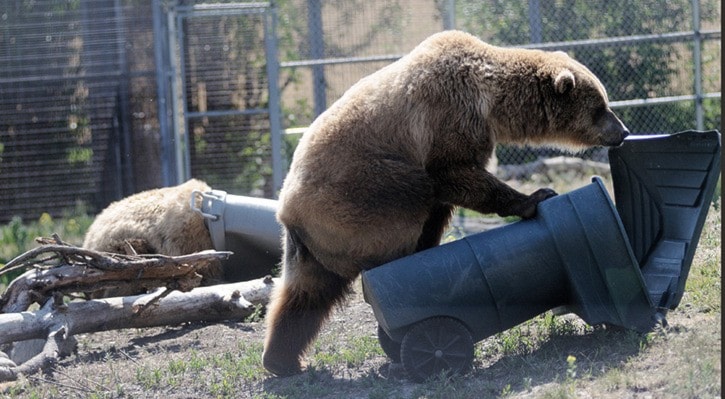If you’ve ever wondered what the most common complaints are about neighbours, try Google for an answer.
Complaints range from noise of every kind – wild parties that go on at all hours, Harleys that roar off in the dawn hours, demanding toddlers who stomp on the floor above and scream, “I want ice cream!” – to residents who disrespect property lines by building a foot or two on your lot to parking a fleet of cars in front of your house.
A universal major complaint involves garbage. Garbage that is left to pile up spilling out along the boulevard, garbage containers filled until the lids pop up like cream in a bottle of frozen milk along a milkman’s route.
One loose dog roaming a street at night can seed garbage for a block on either side of the source. When that happens you are likely to find a 4L plastic milk carton or a takeout fries container in your driveway though you buy neither product.
Given the finicky rules the Regional District of Kitimat Stikine has enacted regulating our garbage, from weekly pickup schedules, to maximum container size, to rigorous sorting into three categories – regular garbage, recyclables, and now organic waste such as kitchen food scraps – I’m wondering what Bear Aware thinks about plans to have containers of organic food waste sitting curbside from 8 a.m. onward?
Can you picture bears coming out of hibernation, starving, to discover street after street bordered by a line of canned food? Or crows and ravens jigging on a branch waiting to clean up any random morsels too small to capture the bears’ notice?
In December 2011 following neighbour complaints that alerted Conservation to a bird feeder owned by the mayor of Kitimat, she was ordered to refrain from feeding birds in her backyard as had been her practice for 30 years. She was charged with failing to comply with a wildlife protection order to stop using bear attractants of birdseed/sunflower seeds on her property.
(Bears love sunflower seeds, as attested to by a cottage dweller near Lloydminster, Saskatchewan who sets out sunflower seeds for red polls and Stellar jays but often finds adult bears emptying the trays.)
The mayor pleaded guilty to the charge. The court ordered her to pay a $100 fine, a $15 victim surcharge fine, and $1100 to Northern Lights Wildlife Society in Smithers. Northern Lights Wildlife Society rescues and rehabilitates orphaned or injured cubs.
Since Conservation saw fit to charge a birder over birdseed on a backyard feeder, how will CO’s react to accessible cans of organic kitchen waste along Thornhill streets?
I don’t know how bear-proof residents’ organic waste containers are expected to be, but judging from the rigorous tests Canada’s national parks use before okaying a garbage container, I doubt a single regional district container will stymie or slow down a hungry or even a curious bruin.
Before Parks Canada approves the durability of various factory built waste containers, the bins must survive an hour of contact with grizzlies at B.C. Wildlife Park in Kamloops, B.C. without presenting a food reward. Their testing protocols follow those used in the U.S. by the Living with Wildlife Foundation based out of Montana.
A Kamloops website shows grizzlies taking turns jumping up and down on a metal container until one side caves enough to let the bear get a grip with claws and teeth. I envision a grand mess left by bears partaking in a ‘progressive meal’ along remote streets.
If a Bear Aware or a littering fine results, will the householder or the regional district be charged? And who will pay?
